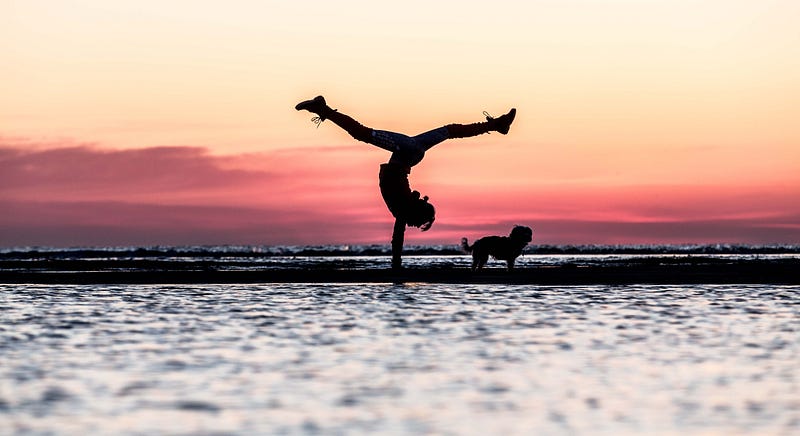Stay Young: Secrets to a Healthy Mind and Body
Written on
The Importance of Movement
I’m not ready to age! While I wouldn’t mind being wealthier or leaner, I refuse to accept the passage of time. At 55, I feel content, and I aim to maintain this state of happiness and health for as long as possible. You can achieve this too!
In 2000, I founded London’s first Classical Pilates studio, and I’m eager to share how this practice benefits both the mind and body. Joseph Pilates once said, "If your spine is inflexibly stiff at 30, you are old. If it is completely flexible at 60, you are young." I’m proudly youthful!
However, I've had to adapt my approach since turning 30—not just for my body, but for my mind as well. Thanks to Classical Pilates, I’ve learned how to do this effectively.
Observing Baby Movement
Next time you observe a baby playing, take note of their movements. When lying on their backs, they kick their legs individually and together, roll around, and push themselves up using their hands. These actions aren’t merely playful; they help strengthen the muscles needed for crawling and walking and stimulate their developing nervous systems.
It’s essential for us to continue engaging in similar movements throughout our lives to maintain optimal posture and overall well-being. Our physical and neurological health relies on keeping our neural pathways clear and active.
For those who have experienced Pilates, the movements of a baby may sound familiar. In mat exercises, we have concepts like Single Leg Stretch and Double Leg Stretch, along with rolling movements such as Rolling Like A Ball and The Seal. We focus on both large and small muscle groups to enhance strength, flexibility, and good posture.
When my daughter was born, I enthusiastically called my Pilates instructor to share my belief that my child was a genius—she must have absorbed Pilates in the womb! I soon realized that many of Joe Pilates’ exercises were inspired by the natural development of babies and children.
The Role of the Brain
How often have you walked into a room only to forget why you went there? Have you found yourself retracing your steps to jog your memory? These moments can be concerning, especially as we witness loved ones suffer from neurological decline.
I’ve unfortunately seen relatives struggle with various neurological conditions, which is heartbreaking. However, I believe there are ways to slow down or even halt these issues. Recent medical research highlights the benefits of coordination exercises for maintaining our neural pathways.
Regular exercise is crucial for preventing dementia and cognitive decline. Aim for at least 30 minutes of physical activity most days, as recommended by Dr. Argye Hillis, director of the cerebrovascular division at Johns Hopkins Medicine.
Neuroplasticity is key! The brain is incredibly adaptable. By engaging in exercises that promote right/left brain coordination and hand/eye coordination, we can stimulate the formation of new neural connections—just as we did as infants.
Imagine being stuck in traffic due to roadwork; it’s frustrating and impedes your journey. Similarly, as we age, we can develop blockages in our neural pathways if we neglect movement and breathing. Fortunately, we can remedy this!
Through targeted exercises found in Classical Pilates, we can clear our neural pathways and regain our agility. Additionally, practices like Tai Chi can offer similar benefits.
Staying Young for Longer
Ultimately, it’s true—you can teach an old dog new tricks and maintain a youthful spirit!

Thanks for reading!
Chapter 2: Fun and Playfulness
The first video showcases a 6-year-old daughter playfully acting like a baby for 24 hours, demonstrating the joy and silliness of youthful behavior.
The second video features a teenager embracing baby-like antics, reminding us that playfulness knows no age.